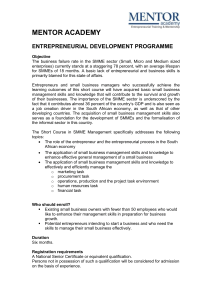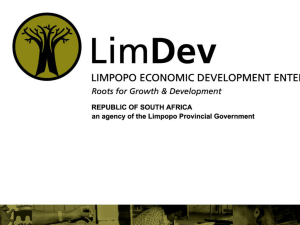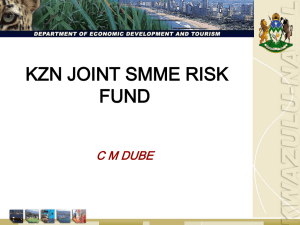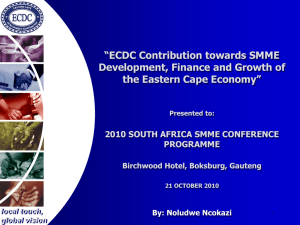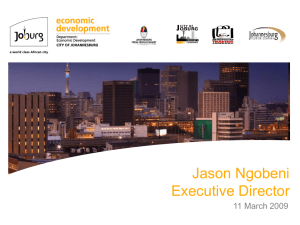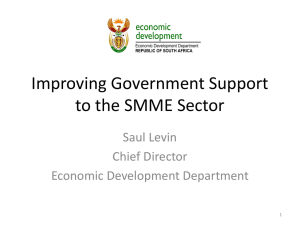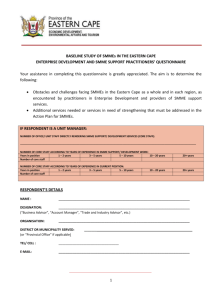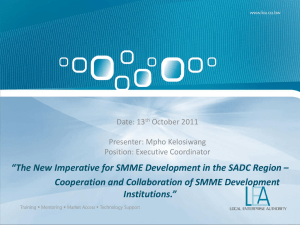Challenges Facing Small Businesses
advertisement
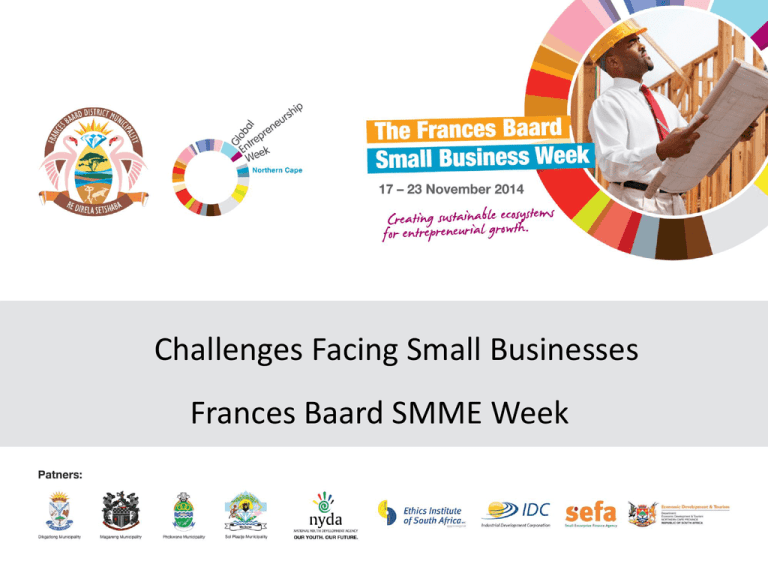
Challenges Facing Small Businesses Frances Baard SMME Week Overview • NDP • Challenges • Conclusion NDP • Sets out ambitious goals for smme’s: – Target – 90% of employment opportunities to be created by this sector by 2030. – Envisions the SA economy growing by at least 5,4% growth per year over the next 15 years – to treble in size ( smme sector is pivotal to drive this growth) • These targets depend on a business environment that supports the growth and sustainability of existing smme’s; a culture of entrepreneurship and enables new sme’s to prosper Challenges • Growth cycle of smme’s : survivalist businesses to potential high growth entrepreneurial firms – Require a richer more detailed analysis of the smme lifecycle to enable policy to be targeted more effectively. • Comparatively underperforming – – Estimated that SA smme’s account for 60% of empployment compared to global average of 77%. • Exceptionally high failure rate: – Min Rob Davies noted that 70% of smme’s fail in their first year. • World Bank: Viability of micro-enterprises is linked to the motivation for starting the business: – Successful businesses start by choice, as entrepreneurial ventures. – Survivalists – motivated by a lack of other employment options – seldom successful. – Most of SA’s smme’s fall into the latter category. – Since - Decline in smme’s employing less than 50 workers Challenges • NDP places smme’s at the head of the employment charge. • Regulatory burden: – Smme’s spend a disproportionate amount of time dealing with regulatory compliance ( approximately 8 working days a month dealing with red tape – a cost of about R 216 000/year4% of turnover if the smme turn R 5 million per year) – Top red tape headaches: • • • • Dealing with SARS Labour issues Dealing with their municinaplities Compliance with BEE – Responses differed across industries: tourism – concerned with municipal issues; manufacturers – labour issues (11 days per case to resolve a dispute) Conclusion • Policy makers need to understand the complexity and diversity of the sector. – Needs linked to incentives. • Address the red tape and burdensome regulations. – Use regulatory impact assessments as a mechanism to reduce red tape. • Interventions to reduce skills shortages • Incentives to encourage investment in smme’s.
